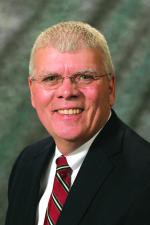RIPON, Wis. — Years ago, our business was different. Unattended stores were prevalent and owners may have focused more on emptying coin boxes and less on the customer. But that was a long time ago.
Stores today are quite different. They are aesthetically more pleasing — warm colors, bright lighting, innovative flooring solutions, better seating, and the list goes on. The vended laundry has gone from a utilitarian store to a full-on laundry experience. However, while floors and seating might contribute to an experience, they aren’t the hallmark of it. A good portion of that heavy lifting comes from staff and customer service. The “Starbucks experience” is framed by the service … that smiling, friendly face taking your order and the one calling your name at the end of the counter.
CREATING THE EXPERIENCE
If you operate an attended store, are you delivering a customer experience that matches the resources built into the laundry? The greatest equipment and décor likely aren’t enough to overcome a surly, unhelpful attendant.
Obviously, the goal is quite the opposite. We want staff to be helpful, pleasant and attentive. Creating that environment starts with good hiring. It extends into solid training, which is where some businesses miss the mark, and includes setting of expectations. This is foundational, the baseline to setting the stage for high-quality customer service. However, it’s by no means where it stops. The great store owners strive for truly exceptional customer service.
RAISING THE BAR
We all want to be noticed, recognized and rewarded for going that extra mile and doing things the right way. But how do we spur those around us to go just as far … or farther? Some will do it naturally — those are the ones who truly grasp the concept of customer service. There are also those who are good in dealing with clients, but pushing beyond the basic expectation is not something they will do on their own. Then there are those who just don’t get it; don’t want to be there; have one eye on their phone and the other out the door.
The latter group likely isn’t going to change, so it’s best to focus on the first two groups and hopefully identify that last group before they damage your business.
Owners early on should start by leading by example when they are in the store. Open doors for customers when you see someone coming in and offer to help them take their basket/bags to their car. These types of actions can go a long way toward inspiring the same behaviors in employees. But that’s not where it stops.
BUILDING IN INCENTIVES
To be appreciated, we need to know we are being “seen.” So rewarding staff for going the extra mile can be as simple as pulling them aside and letting them know you appreciated their action. The seemingly basic “thank you for coming in when Staffer XYZ called in sick” or “I saw that you helped that senior citizen to their car and I want you to know I appreciate it” is a no-cost reward that can have a nice impact on the attitude of the employee, as well as their willingness to continue the action. The name of the game is positive reinforcement.
Ed Ellis, who owns 1 Clean Laundry in St. Cloud, Fla., has built an incentive program around his successful wash-dry-fold (WDF) business. He sets a store goal and attendant goals for pounds of laundry processed. When employees reach their goals, they are awarded gift cards for the business of their choosing.
Staff is kept up to date with “thermometer” progress charts posted in the office on a bulletin board.
This incentive program has worked well in team building as well as the WDF end of the business, which was up 40% last year, he says.
This example shows that building a rewards program with incentives can deliver solid results. Best of all, with some of today’s robust laundry management systems, it only takes a few mouse clicks to pull WDF numbers and break them down by staff member. In the past, this may have been a manual process or one that involved multiple systems (payment and machine operations), which may have kept owners from building in rewards programs. Technology, however, is making it easier than ever by putting all the information in one place.
That same technology has enabled even more robust incentive programs, where employees could earn rewards points for not only WDF performance, but also for signing up customers for loyalty programs. All this information is easy to collect and monitor within such systems.
In Thursday’s conclusion: Additional metrics, rewards, and some final thoughts
Have a question or comment? E-mail our editor Bruce Beggs at [email protected].

